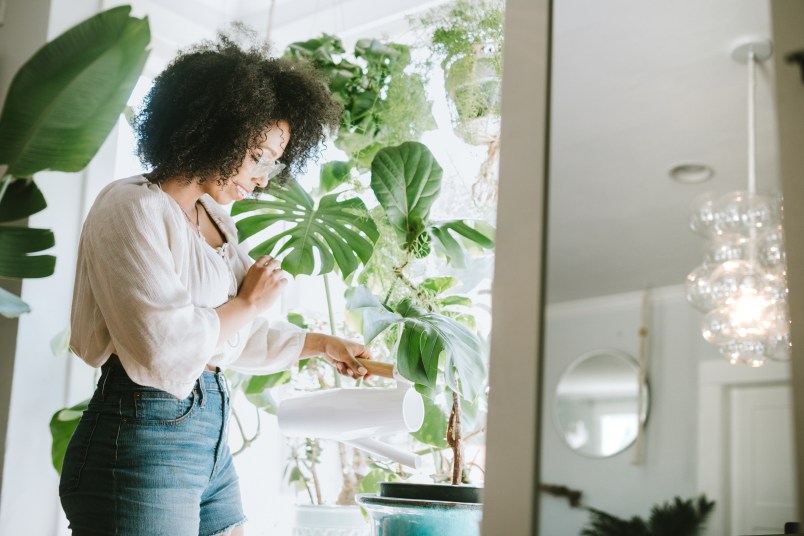5 Tips For Keeping Your Indoor Plants Alive

If you want plant life around you but don’t have an outdoor space, introduce greenery into your interior with hardy indoor plants. But be careful to choose plants that can tolerate life on the inside.
Enough light and correct positioning of indoor plants are crucial.
When buying an indoor plant, pay attention to the light requirements on the plant’s tag. The main reason indoor plants don’t thrive as well as they should is that they’re not provided with the right type of light. Indoor plants can fall into four basic light requirements — direct sun, bright indirect light, light shade, and full shade.
If your plant isn’t getting enough light, its lower leaves can turn yellow and fall off, have slow or no growth, variegated leaves can turn solid green, or new shoots reach out toward the light.
If your plant is getting too much light, brown scorch marks can appear on leaves, your plant may wilt during the hot part of the day, or leaves can become dry and fall off.
Ensure the temperature is right.
Most indoor plants tend to be native to tropical or subtropical countries, so their natural growing climate is similar to the temperature inside most homes, between 65 degrees Fahrenheit and 85°.
Heat generated from fridges and heaters can make indoor plants too warm, so keep them positioned away from the heat source. As long as your home, generally, stays within the temperature range above, your indoor plants should have no dramas with temperature.
Choose the best pot/planter.
If your plant pot is too large it can be heavy to move around, and also retain too much water that could lead to root rot. If the pot’s too small, it can restrict the plant’s roots and overall growth of the plant.
Clay or porous pots are best as they allow air to pass through the sides of the pot and provide better aeration to the roots. A lot of indoor plants only need watering once a week, but make sure you have a saucer underneath to catch the drained water.
Make sure you have the right tools and potting mix.
A small watering can is the easiest tool to water your indoor plants and a hairdresser’s water spray bottle is handy to spray a mist on the plants’ leaves to ensure adequate humidity. When you water your cactus, water well and make sure the water drains out of the pot.
A good potting mix should include soil conditioners that provide the plant with all the good stuff such as nutrients, support, aeration, and adequate drainage. Premium blends should have these properties listed on the pack.
Make sure you feed your plants.
To get the best from your indoor garden, remember to feed it. A slow-release fertilizer is the best way to feed your plants. You can buy slow-release fertilizer specially made for indoor plants, which will gradually fertilize plants throughout the year. Supplementing this with added liquid plant tonic will promote luscious green growth. This is normally applied once every three weeks or so.
This article originally appeared on our sister site, Homes to Love.












